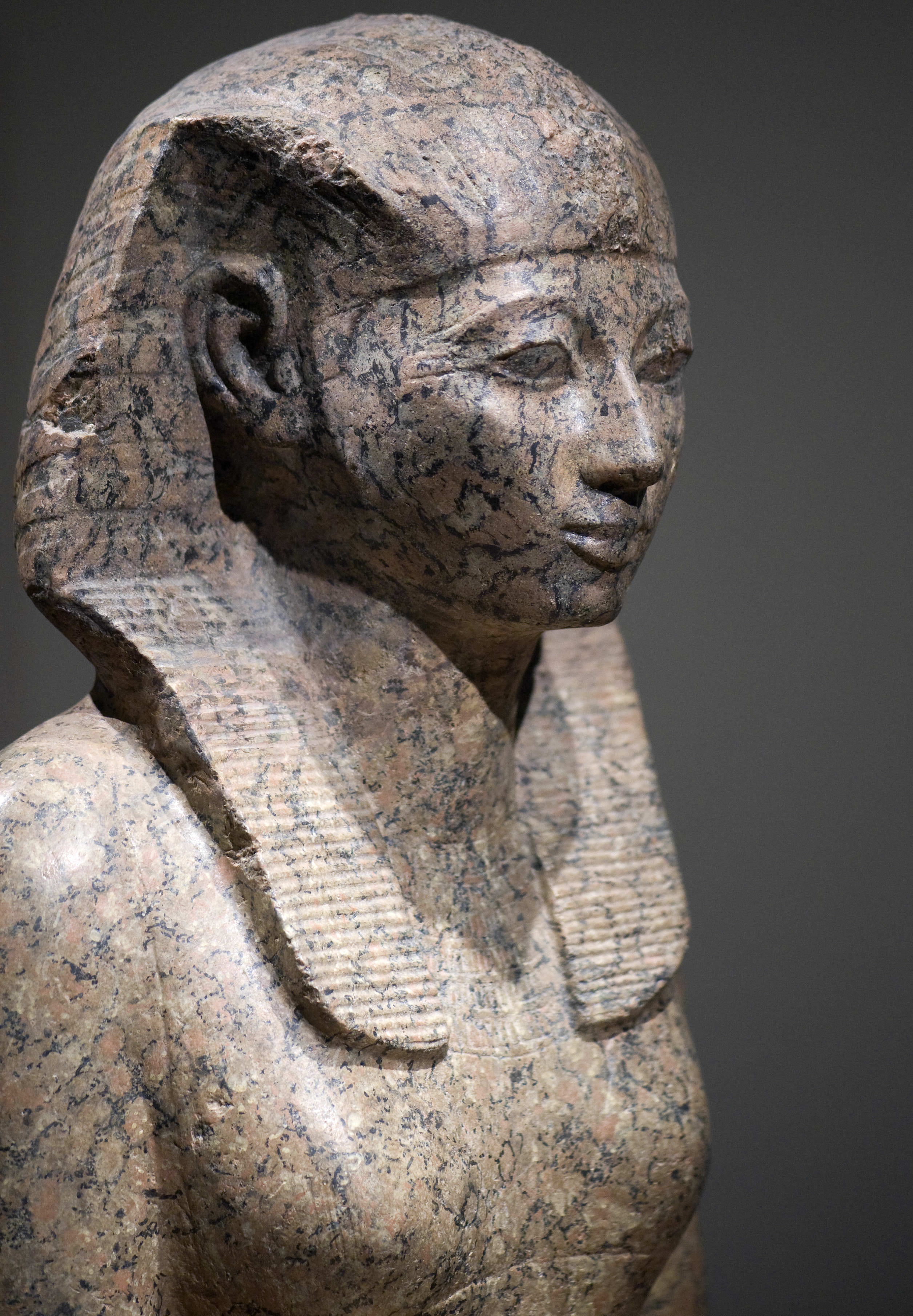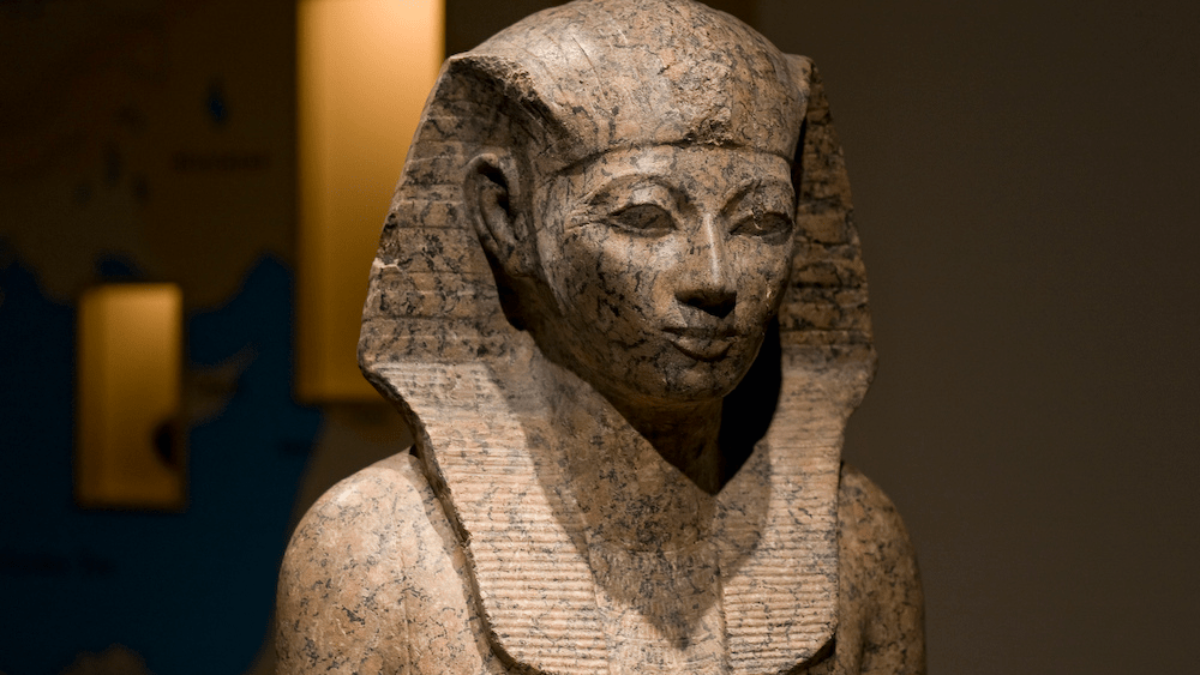Introduction
In the annals of ancient Egyptian history, few figures stand out as boldly as Hatshepsut, the female pharaoh who defied convention and rose to power during the prosperous New Kingdom period. Born around 1479 BC, Hatshepsut’s remarkable reign from 1479-1458 BC marked a significant departure from the male-dominated leadership that had long characterized the Egyptian monarchy.

As we delve into the captivating story of Hatshepsut’s life and legacy, we’ll uncover the remarkable circumstances that propelled her to the throne, the innovative strategies she employed to solidify her rule, and the lasting impact she had on the cultural, economic, and political landscape of ancient Egypt. From the imposing monuments she commissioned to the diplomatic triumphs that expanded Egypt’s influence, Hatshepsut’s reign stands as a testament to the power and resilience of female leadership in a time when it was exceptionally rare.
The Rise of a Female Pharaoh
Hatshepsut’s path to the throne was far from conventional. Born to Pharaoh Thutmose I and his primary wife, Ahmose, Hatshepsut was not initially destined for the role of ruler. However, when her father died and her half-brother, Thutmose II, ascended to the throne, Hatshepsut found herself in a position of considerable influence as the new queen.
Thutmose II’s reign was relatively short-lived, as he passed away after just a few years on the throne. This unexpected turn of events thrust Hatshepsut, now a widow, into a pivotal position. With her young stepson, Thutmose III, too young to rule, Hatshepsut seized the opportunity to assert her own claim to power.
Recognizing the need for a strong, experienced leader to guide Egypt through a critical period, Hatshepsut took bold action. She gradually consolidated her authority, first serving as a regent for the young Thutmose III, and then ultimately declaring herself the rightful pharaoh. This unprecedented move was a testament to Hatshepsut’s political acumen, as she skillfully navigated the complex power dynamics of the Egyptian court to secure her position as the sole ruler of the kingdom.
Hatshepsut’s Reign: A Golden Age of Prosperity
Hatshepsut’s reign as pharaoh marked a period of unparalleled prosperity and stability for ancient Egypt. Leveraging her diplomatic skills and strategic vision, she set out to expand Egypt’s influence both domestically and internationally, solidifying the country’s status as a regional superpower.
One of Hatshepsut’s most significant achievements was the expansion of Egypt’s trade networks. She commissioned the construction of a fleet of ships that embarked on groundbreaking voyages to the land of Punt, a mysterious and wealthy region located along the Red Sea coast. These expeditions not only brought back valuable resources, such as incense, spices, and exotic animals, but also strengthened Egypt’s commercial and cultural ties with its neighbors.

Hatshepsut’s reign was also marked by a remarkable building program that left an indelible mark on the Egyptian landscape. She commissioned the construction of numerous temples, monuments, and obelisks, including the magnificent mortuary temple at Deir el-Bahri, which stands as a testament to her architectural vision and engineering prowess.
Through these ambitious construction projects, Hatshepsut sought to solidify her legitimacy as pharaoh and cement her legacy for generations to come. The sheer scale and grandeur of her building program, which included the erection of towering obelisks and the restoration of ancient temples, were not only symbols of her power but also reflected her deep commitment to preserving and enhancing Egypt’s cultural heritage.
Hatshepsut’s Unique Representation and Self-Fashioning
Hatshepsut’s rise to power was not without its challenges, as she navigated the complex gender dynamics of ancient Egyptian society. Aware of the need to establish her authority and legitimacy, Hatshepsut employed a range of strategies to present herself as a powerful and capable ruler.
One of the most striking aspects of Hatshepsut’s self-fashioning was her visual representation. In many of the surviving artworks and monuments from her reign, Hatshepsut is depicted with the traditional regalia and attributes of a male pharaoh, including the distinctive double crown and the ceremonial beard. This deliberate choice to adopt masculine iconography was a strategic move to assert her authority and command respect from her subjects.
However, Hatshepsut’s self-representation was not limited to the physical. She also crafted a compelling narrative that emphasized her divine right to rule, drawing upon the rich mythological traditions of ancient Egypt. In her inscriptions and reliefs, Hatshepsut presented herself as the chosen successor of the gods, with a special connection to the powerful deity Amun-Ra.
By skillfully weaving together elements of traditional pharaonic imagery and divine legitimacy, Hatshepsut was able to overcome the societal barriers that typically prevented women from ascending to the throne. Her innovative approach to self-fashioning not only solidified her position as a respected and powerful ruler but also paved the way for future generations of female leaders in ancient Egypt.
Hatshepsut’s Architectural Legacy
One of the most enduring aspects of Hatshepsut’s reign is her remarkable architectural legacy, which can be seen in the numerous monuments and temples she commissioned throughout Egypt. Perhaps the most iconic of these is the mortuary temple at Deir el-Bahri, located on the west bank of the Nile in Thebes.
The Deir el-Bahri temple complex, which was built into the cliffs of the Theban necropolis, represents a significant departure from the traditional Egyptian temple design. Rather than the typical pyramid or obelisk-topped structures, Hatshepsut’s temple features a series of terraced, colonnaded courtyards that ascend the hillside, creating a visually striking and harmonious integration with the natural landscape.
The temple’s architectural design was not only aesthetically pleasing but also served a practical purpose. The terraced layout allowed for the efficient organization of the various ritual and administrative spaces within the complex, as well as the easy movement of pilgrims and worshippers. Additionally, the temple’s orientation towards the Nile and the rising sun was a deliberate choice, reflecting Hatshepsut’s deep connection to the natural world and the divine forces that governed it.
Beyond the impressive physical structure, the Deir el-Bahri temple is also renowned for its intricate and well-preserved reliefs and inscriptions. These elaborate carvings and paintings not only depict scenes from Hatshepsut’s life and reign but also serve as a testament to the artistic and technical prowess of the ancient Egyptian craftsmen who brought her vision to life.
The Deir el-Bahri temple is just one example of Hatshepsut’s architectural legacy, which can be seen in the numerous other monuments and structures she commissioned throughout Egypt. From the towering obelisks that she erected at the temple of Karnak to the restoration and expansion of ancient shrines and sanctuaries, Hatshepsut’s building program left an indelible mark on the Egyptian landscape, solidifying her place as one of the most prolific and influential pharaohs in the country’s history.
The Mysterious Disappearance of Hatshepsut’s Legacy
Despite the undeniable impact of Hatshepsut’s reign, the later years of her rule and the fate of her legacy have long been shrouded in mystery and speculation. After nearly two decades on the throne, Hatshepsut’s reign came to a sudden and somewhat enigmatic end, with her name and image being systematically erased from many of the monuments and inscriptions she had commissioned.
The reasons behind this apparent erasure of Hatshepsut’s legacy have been the subject of much scholarly debate. Some historians believe that the young Thutmose III, who had been relegated to a secondary role during Hatshepsut’s reign, may have orchestrated a deliberate campaign to erase his stepmother’s memory and assert his own claim to power.
Others have suggested that the erasure of Hatshepsut’s legacy may have been the result of a broader societal backlash against her unconventional rise to power. As a female pharaoh, Hatshepsut’s reign challenged the deeply ingrained patriarchal structures of ancient Egyptian society, and it’s possible that certain factions within the ruling class sought to undermine her legacy in the aftermath of her death.
Regardless of the specific reasons, the systematic removal of Hatshepsut’s name and image from many of the monuments and inscriptions she had commissioned has made the task of reconstructing her life and reign particularly challenging for modern-day scholars. Nevertheless, the fragments of her legacy that have survived, including the magnificent Deir el-Bahri temple and the numerous other architectural and artistic works she commissioned, continue to captivate and inspire people around the world.
Conclusion: The Enduring Legacy of Hatshepsut
The story of Hatshepsut, the female pharaoh who defied convention and rose to power during the prosperous New Kingdom period, is a testament to the resilience, vision, and strategic brilliance of one of ancient Egypt’s most remarkable rulers.
Through her innovative approach to self-fashioning, her ambitious building program, and her savvy diplomatic and economic policies, Hatshepsut left an indelible mark on the cultural, political, and architectural landscape of ancient Egypt. Her reign ushered in a golden age of prosperity and stability, and her legacy continues to captivate and inspire people around the world.
Despite the mysterious disappearance of much of her legacy in the aftermath of her death, the fragments that remain, such as the magnificent Deir el-Bahri temple, stand as a testament to Hatshepsut’s enduring influence and the lasting impact of her remarkable reign. As we continue to uncover and explore the rich history of ancient Egypt, the story of Hatshepsut, the female pharaoh who dared to challenge the traditional power structures of her time, will undoubtedly continue to captivate and inspire generations to come.

